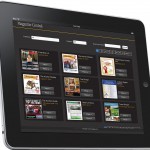Newspaper Digital Publishing: Getting Started
Fifty percent of readers get their news online in comparison to radio and newspapers (23 percent and 28 percent respectfully). This is according to the Pew Research Center’s Biennial Media Attitudes Survey July 2013. With news being served minute-to-minute on various platforms of electronic media, newspapers have risen to the challenge to keep up with their digital readers. The key to keeping a reader engaged will mean understanding today’s internet trends and adapting to various multimedia tools. What are digital newspaper publishers focusing on in order to keep up with their digital subscribers?
1. Webpage: The first step would be to get a domain name for a website, choose a web host, set up the design of your webpage, develop a content plan, and plant for maintaining the website. Every large digital newspaper has a website. While some newspaper publishers offer a replica of their print edition, others offer a more interactive publication with brief articles, embedded videos, and diverse options for different news categories like business, political, sports, entertainment, etc. A digital news report from Reuters states that 44 percent of Americans are interested in International news by country. Newspaper publications with larger circulations provide options to the readers to access their publications from other countries and regions.
2. An Adaptability on Different Devices: The latest digital publications softwares for newspapers are designed to serve news on different devices such as iPads, tablets, Androids, laptops, and mobiles. With readers accessing their emails and social sites through these devices, digital news publishers are ensuring every reader has an optimal experience on his personal device with ‘Responsive Web Design’. RWD designs the website’s content to flow and adapt to different screen sizes of various device environments it might be seen or used in.
3. Social Media: Nineteen percent of the readers saw their news or news headlines on Facebook or other social networking sites as per the PEW’s study. Twitter, Facebook and RSS feeds are the most powerful social media tools to stir up news traffic.On any given day, the digital reader gets his news from the Facebook link of a digital newspaper, navigates to the digital edition of the newspaper, reads the related topics, gets involved in what his friends are talking about, shares his views on Twitter and Facebook, comments on the published article and googles for more versions of related news on the Internet. Editors are pulling out all the stops with tweets, blogs, and comments to keep the reader’s attention. Any kind of ‘breaking news’ on Facebook or Twitter spreads like ‘wildfire’ and streams the traffic to the news website.
4. Multimedia Adaption: Digital news publishers are leaving no stones unturned when it comes to engaging readers with rich media content in digital publications. Embedding videos into stories, threading audio content, images layered with text or put together in slideshows, animation and interactive quizzes and maps are being adapted into news content to create fresh and engaging formats for digital readers.
5. Advertising revenues: Internet Advertising Revenue Report confirmed that the internet advertising revenues in the U.S. hit a record-breaking high of $10.69 billion by the third quarter of 2013 and digital advertising now makes up to 23 percent of overall U.S. advertising. While banner ads are the primary ‘bread and butter’ of digital advertising – video advertising, rich media advertising and sponsorships are also being utilized among the digital publishers.
As interest in reading newspaper content online grows, it will be more important than ever to focus on optimizing digital content. What are you doing to keep up with your digital readers? Share your thoughts.
For information on Digital Studio, our digital edition software, and The Newspaper Manager, our newspaper management software, contact us here.





